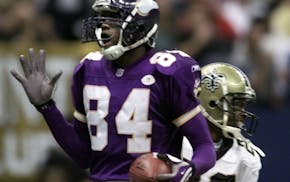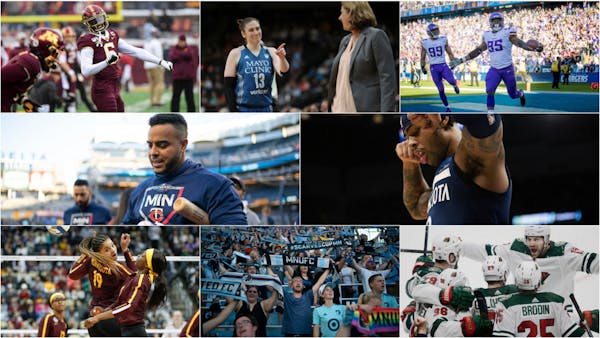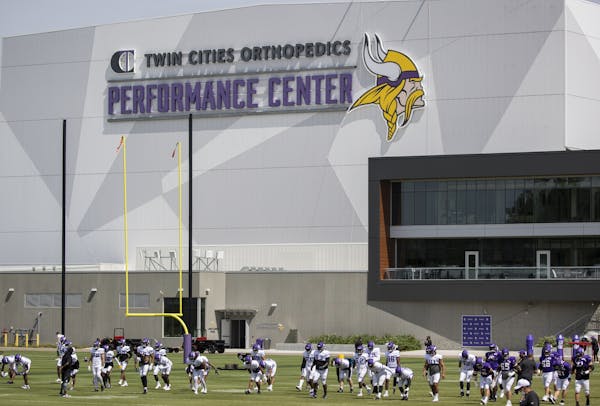The only thing harder than being one of the best defenses in the NFL is staying there, something the Vikings learned last season.
In the previous three seasons (2016-2018) the club dominated the NFL, allowing 14,408 total yards (300.2 per game). The next-closest club to that mark was the Jaguars at 14,708 yards (306.4 per game). The next-closest NFC team was the Bears, who allowed over 1,000 more total yards than the Vikings at 15,449 (321.9 per game).
So while the club did just fine last season in giving up 303 points (18.9 points per game), which tied for the fifth fewest in the NFL, their 5,465 yards allowed ranked 14th.
Then the Vikings lost key players such as defensive end Everson Griffen and defensive backs Xavier Rhodes, Trae Waynes and Mackensie Alexander, so there's a lot of people expecting the defense to struggle in 2020.
But don't be surprised if the exact opposite is true and this defense actually improves from a year ago.
New co-defensive coordinator Andre Patterson said he and coach Mike Zimmer — who have worked together for one year at Weber State, three years with the Cowboys and going on seven years with the Vikings — love having people doubt their defense.
"The two of us have always been that way," Patterson said. "And I think that motivates us to do our job, and usually the kind of guys we bring into the program kind of have that same mind-set, too. They look forward to the challenge. Every year you have to earn how good you are. You know, it just doesn't carry over. You start from ground zero, you play 16 games and then when it's all over and done with, you look and see how well you've done."
When you consider this defense still has Danielle Hunter and Shamar Stephen on the defensive line, Anthony Barr and Eric Kendricks at linebacker and Harrison Smith and Anthony Harris at safety, there's good reason why the Vikings could really thrive with some younger guys getting more playing time such as defensive linemen Ifeadi Odenigbo, Jaleel Johnson and Jalyn Holmes; linebacker Eric Wilson and cornerback Mike Hughes.
Odenigbo ready?
Maybe the biggest replacement on the Vikings' defense will be Odenigbo. The third-year defensive end will get a chance to start full-time now that Griffen has joined the Cowboys after the club decided to not re-sign him.
There's a chance Odenigbo could be a better fit next season than Griffen, even though he is considered among the best defensive ends in the game and his 57 sacks since 2014 are the ninth most in the NFL.
Odenigbo had a great college career at Northwestern under Pat Fitzgerald and finished second in career sacks at the school with 23½. But expectations were low when the Vikings took Odenigbo in the seventh round of the 2017 draft, placed him on the practice squad for much of that season and then waived him in September of 2018.
But he was re-signed the next month and the 26-year-old had a breakout campaign last season, posting seven sacks to go along with 13 quarterback hits, one force fumble, two fumble recoveries (including one returned for a touchdown) and 23 tackles.
Of all the players drafted in 2017, Odenigbo's seven sacks in 2019 ranked third. He trails only T.J. Watt of the Steelers (a first-round pick who had 14½ sacks) and Myles Garrett (the No. 1 overall pick of the Browns who had 10).
Patterson, who is also the defensive line coach, said his goal for Odenigbo is to just keep doing what he did last season.
"I think No. 1 is just to keep improving, you know? Just keep getting better. That's how he made the jump that he made last year," Patterson said. "What he cannot do is put pressure on himself that, 'Oh, I have a chance to maybe be a starting player now, so now I'm going to change my routine and change everything.' That's the worst thing he can do."
No more tipoffs
Reliever Tyler Clippard already has proved to be a great signing by the Twins front office. He has posted a 1.69 ERA over 10⅔ innings while also making two starts as an opener.
Before the season was suspended in March, Clippard told me he made big changes following the 2017 season when he posted the highest ERA of his career at 4.77 while pitching for the Yankees, White Sox and Astros. He said there were times he was giving away what pitch he was about to throw because of his body language.
"Certainly, throughout my whole career, I have been a guy who at times was tipping [pitches]," he said. "There was a time toward the latter half of that 2017 season where I really had to make some mechanical adjustments to combat what I thought I was doing to give away some of the things — not necessarily signs and stealing signs and things like that, but it was glove positioning and things like that, just normal baseball stuff that I felt like hitters were picking up on. I made those adjustments and they seemed to help, they seemed to help my mechanics and seemed to help me not tip as much as I used to.
"Anytime you can level the playing field at the professional level, it's going to be a beneficial thing. You don't want the hitter to know what's coming. It's obviously hard enough to get those guys out. It's part of the game, but you have to do your job as a pitcher to combat that stuff."
Juiced ball?
In talking about the theory that baseballs have been "juiced" to fly farther and produce more offense, Clippard said he noticed the problem a few years ago. Several pitchers have pointed to last season as an example, when teams belted the most home runs in the history of the game and the Twins hit an MLB-record 307 homers.
"I really started to notice a difference in the baseball in 2017, if I had to pinpoint a year where I felt like it just felt different in my hands and the ball started to fly a little bit more," Clippard said. "You're used to, as a pitcher, from your perspective, knowing how the ball comes off the bat over the years and you think, 'That's probably going to be caught,' or 'That's just a fly ball to center field.' There were a couple times where you throw a pitch and the guy hits it and you think it's an out, and you turn around and the outfielder keeps running and it barely goes over the fence.
"And it just didn't match up with my eye from what I'm used to seeing, and that has happened over the last few years more and more. You can even see it with the outfielders, with their reads and how they're reacting."
Sid Hartman can be heard on WCCO AM-830 at 8:40 a.m. Monday and Friday and 2 p.m. Friday. • shartman@startribune.com

Sid Instant Replay from 1977: Vikings' Super Bowl loss to Raiders hurt the most
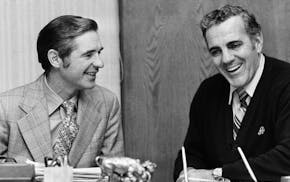
Read Sid's column from 1974, when Ara Parseghian left Notre Dame
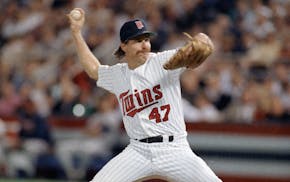
Sid instant replay: No greater hero than Twins' Morris in World Series
